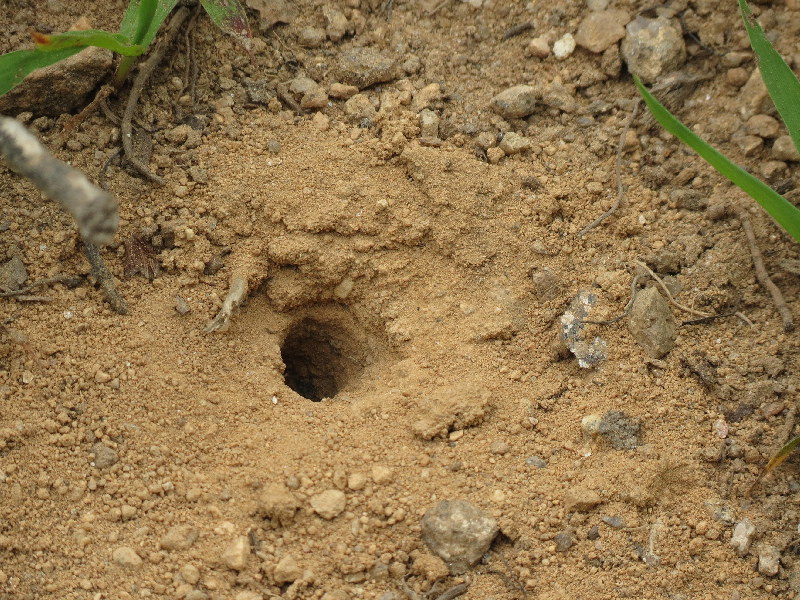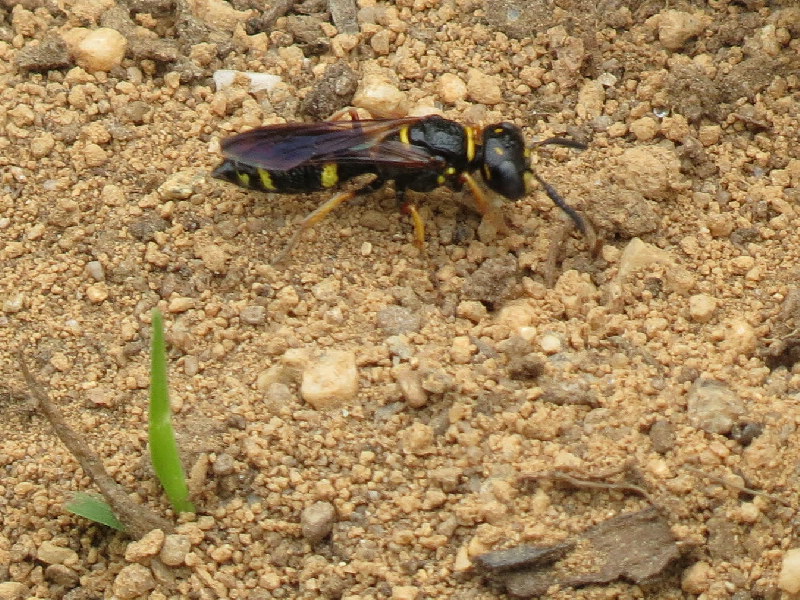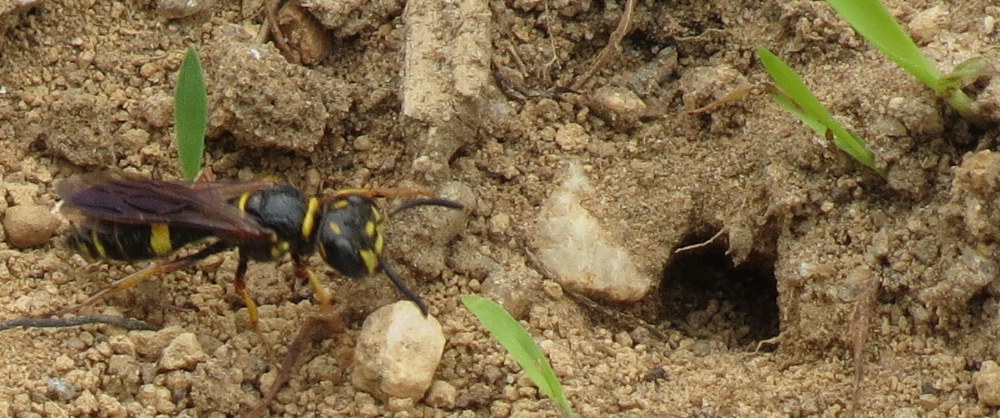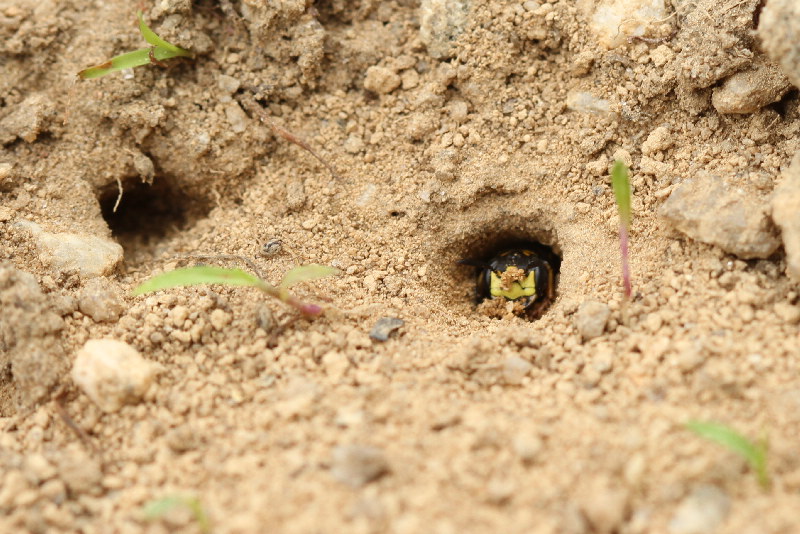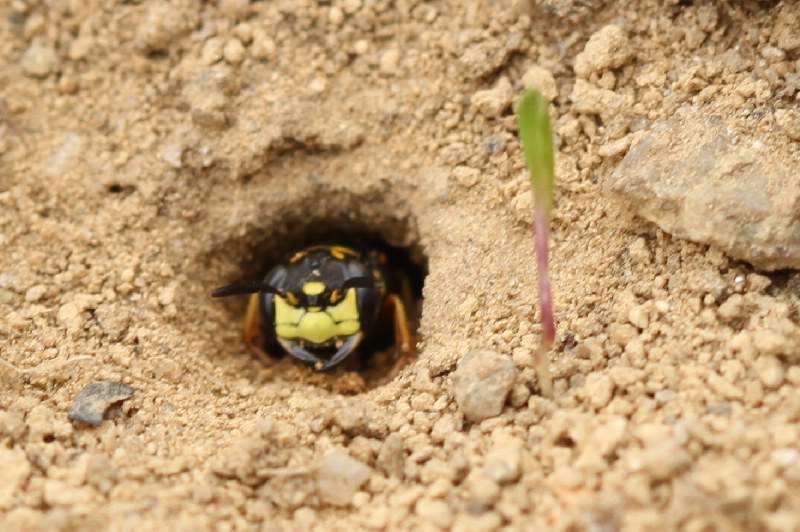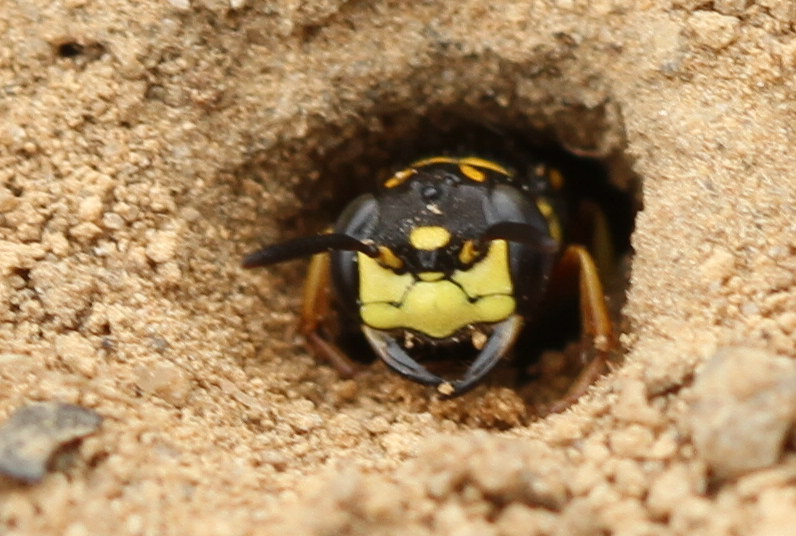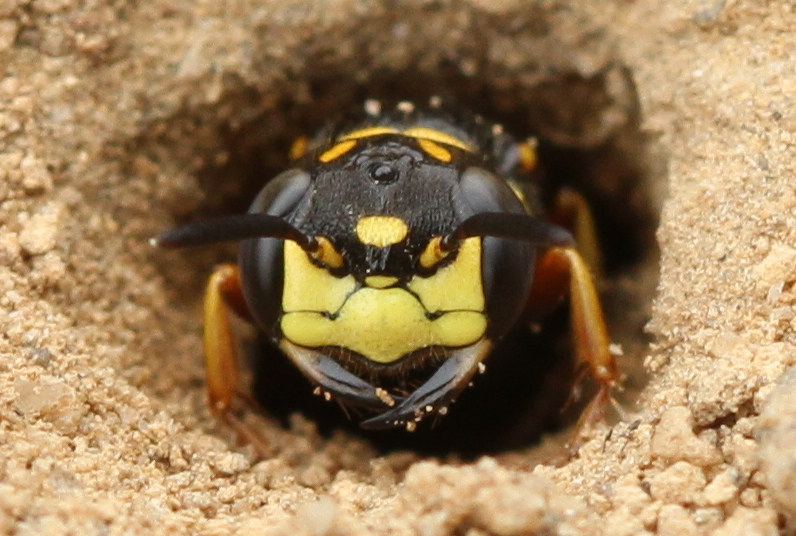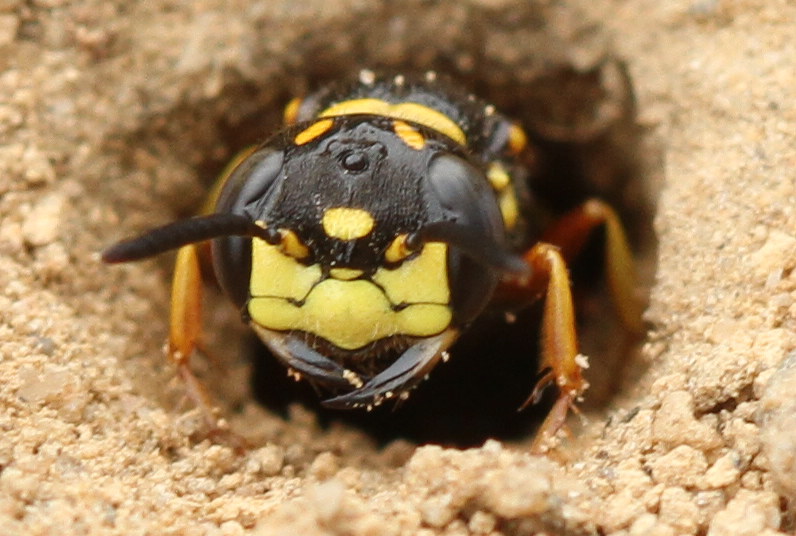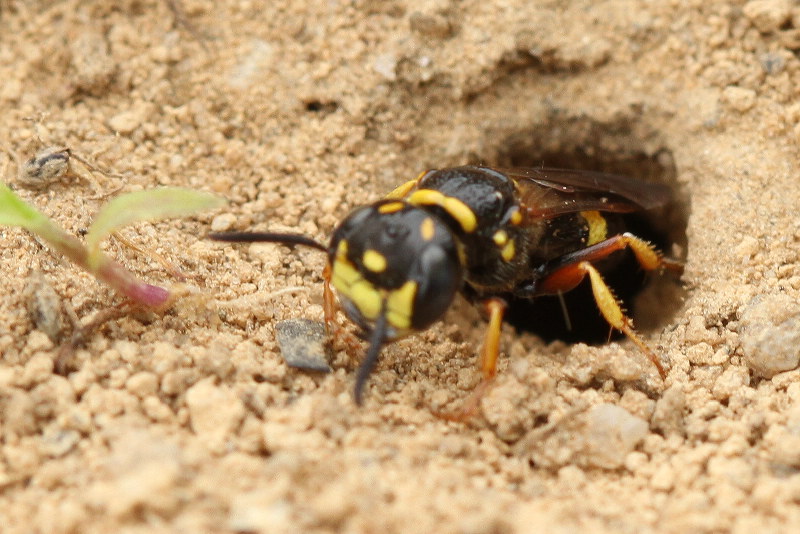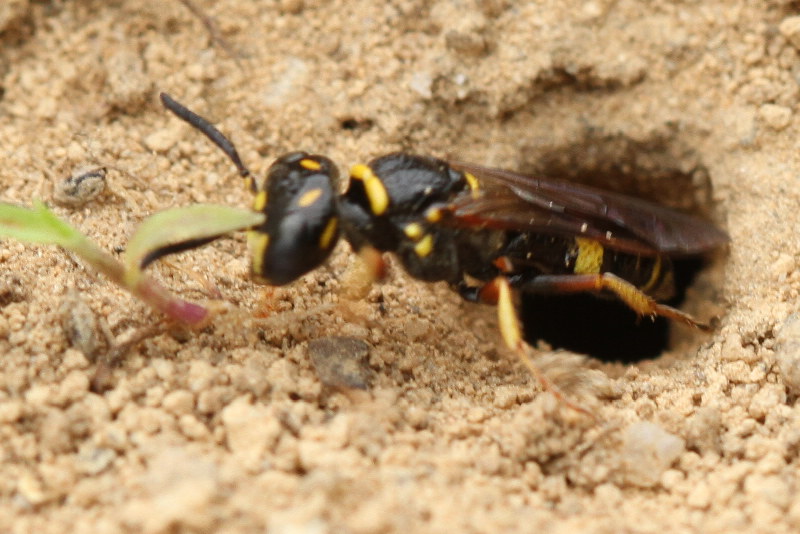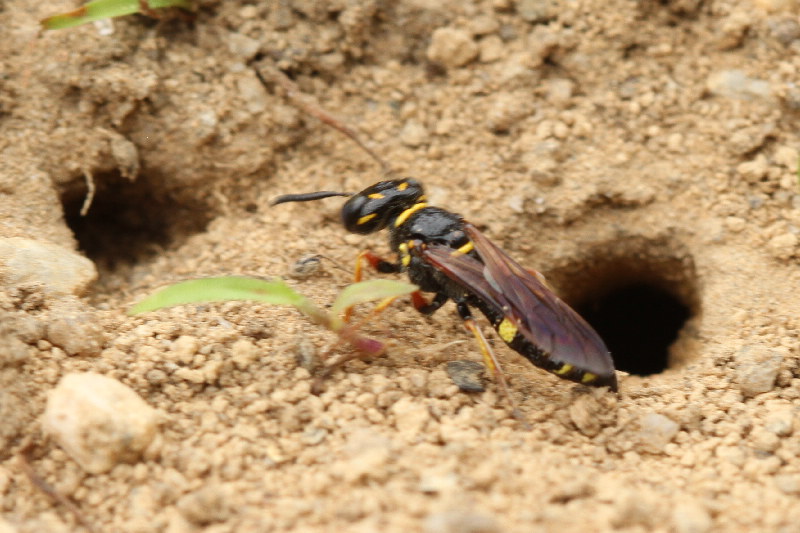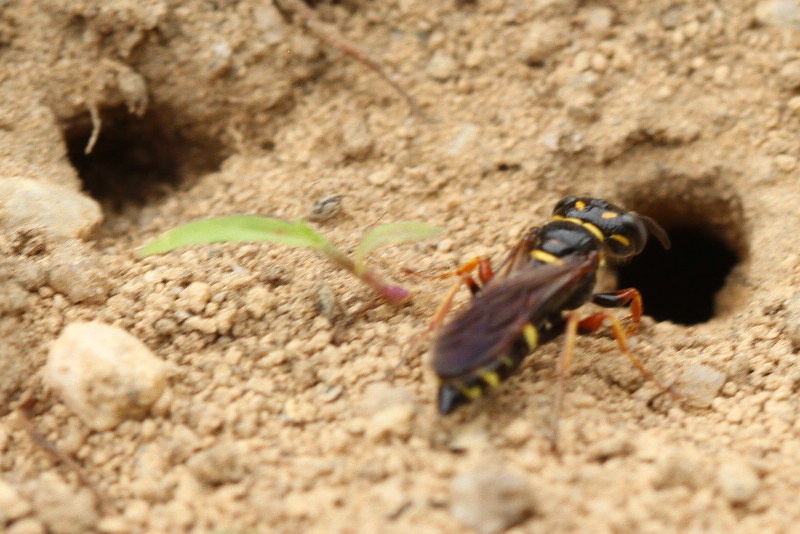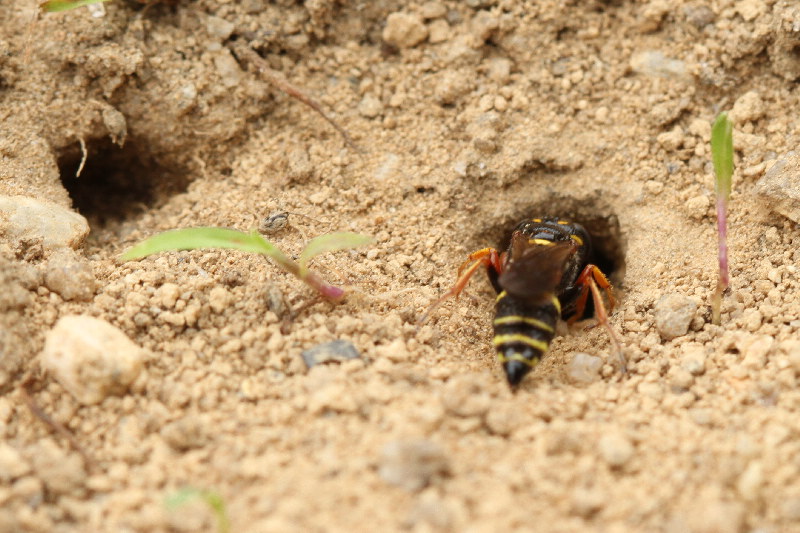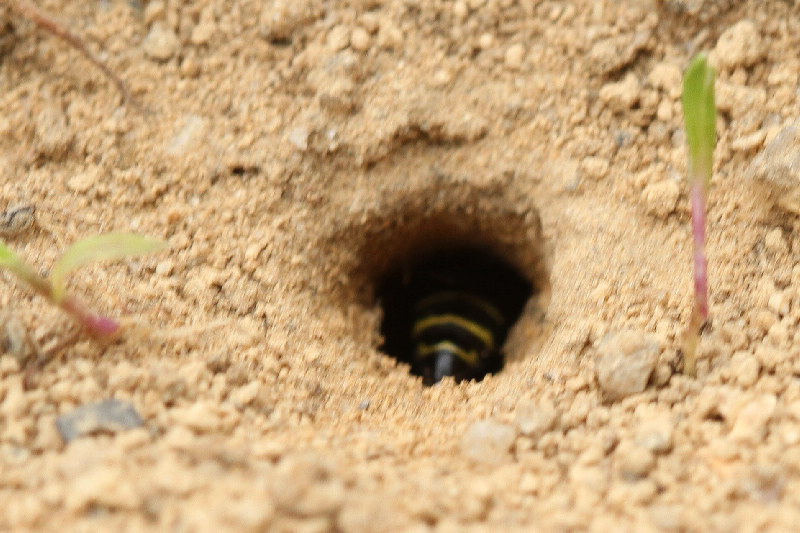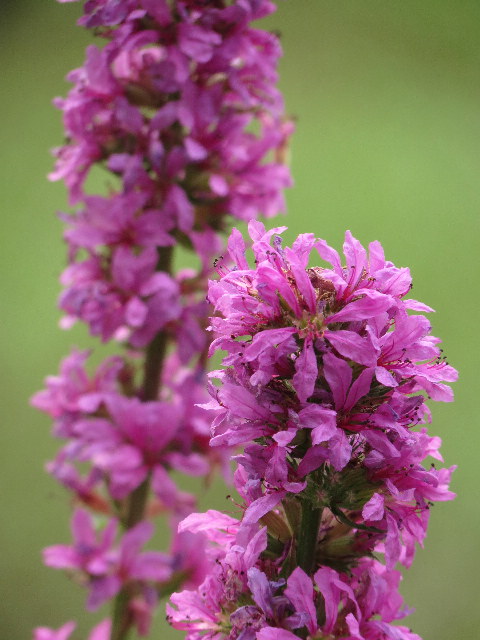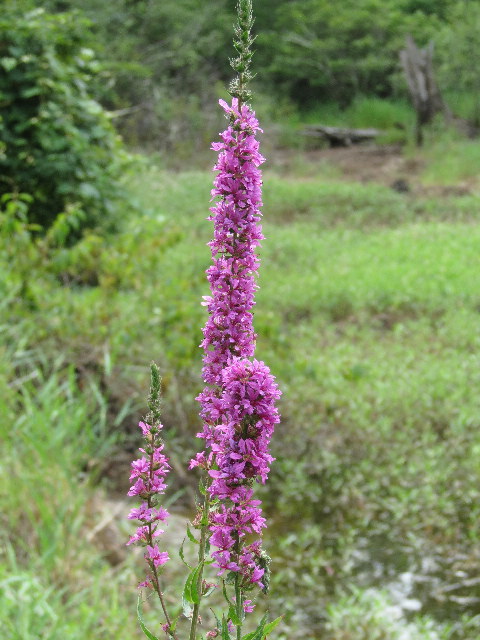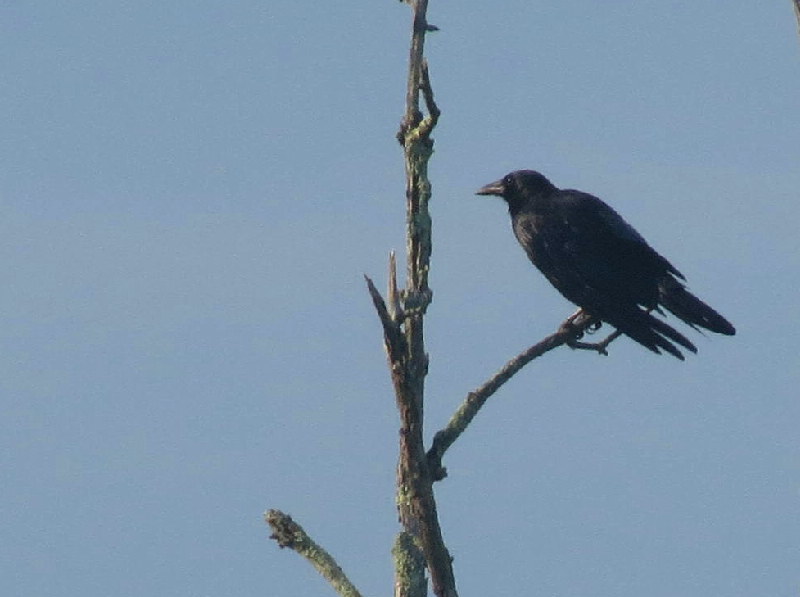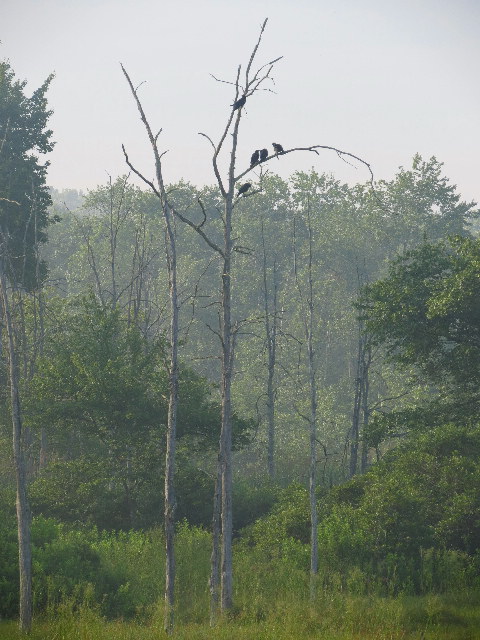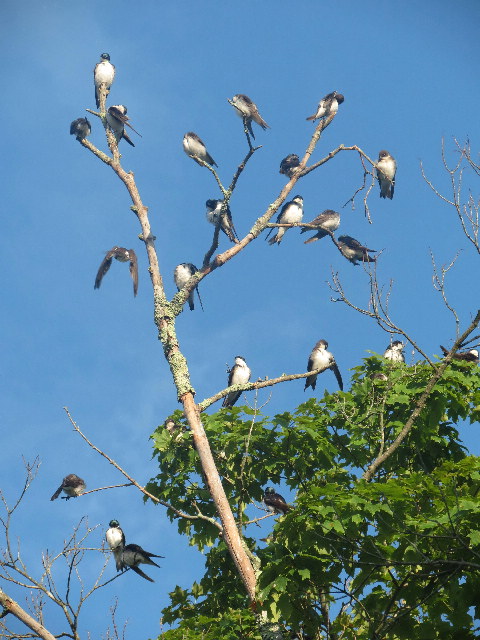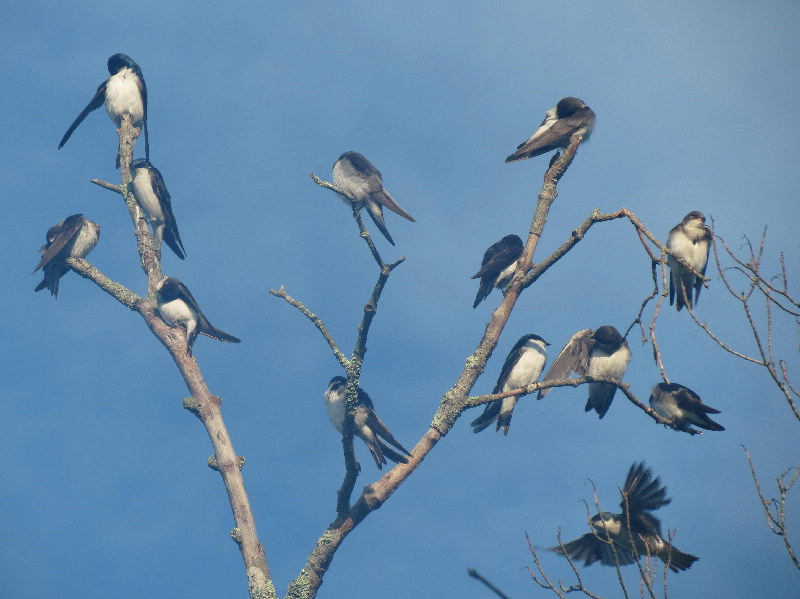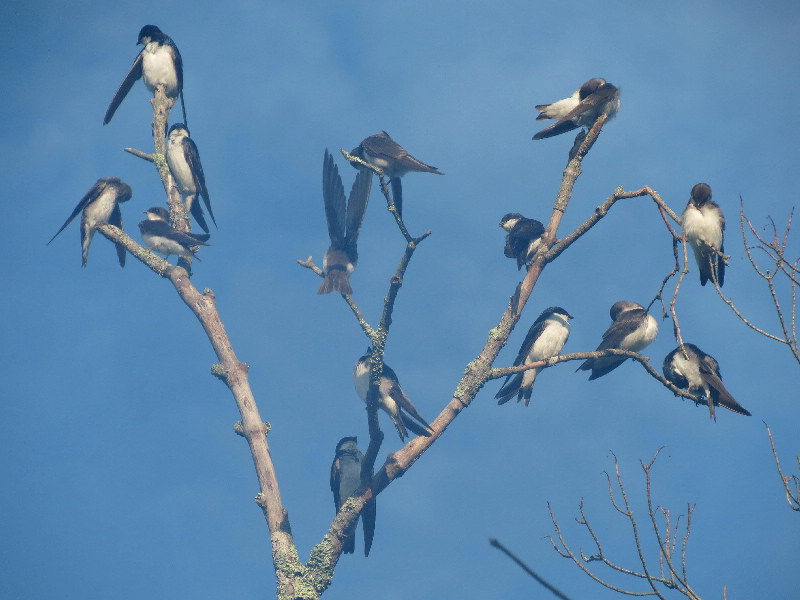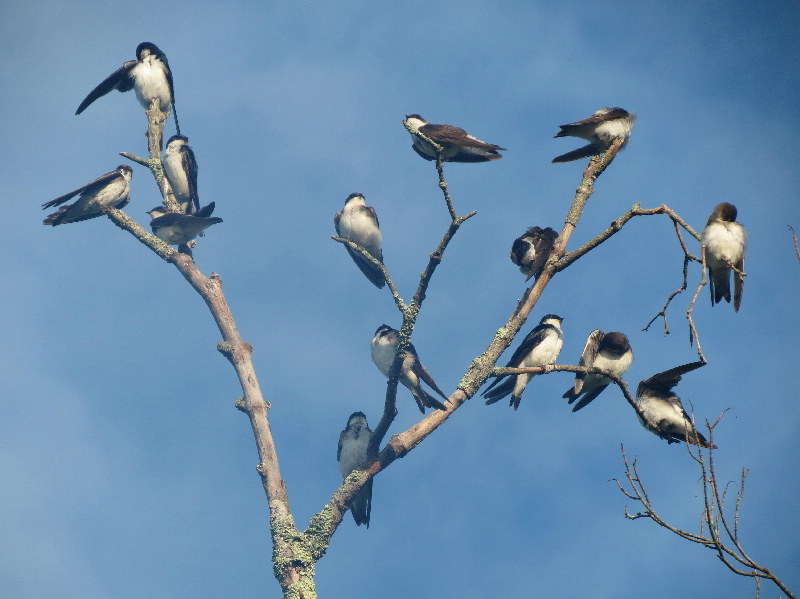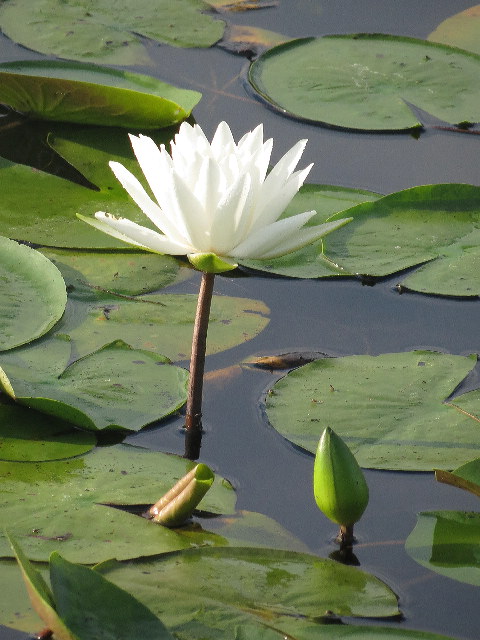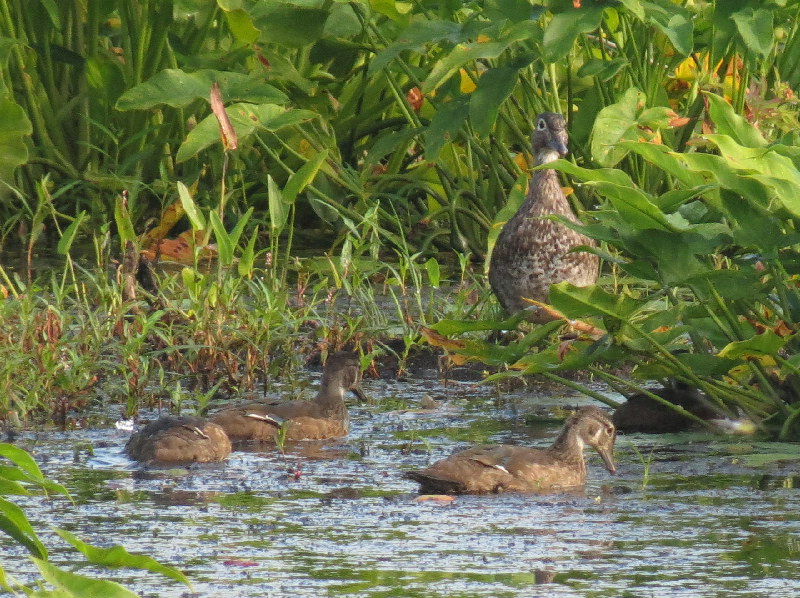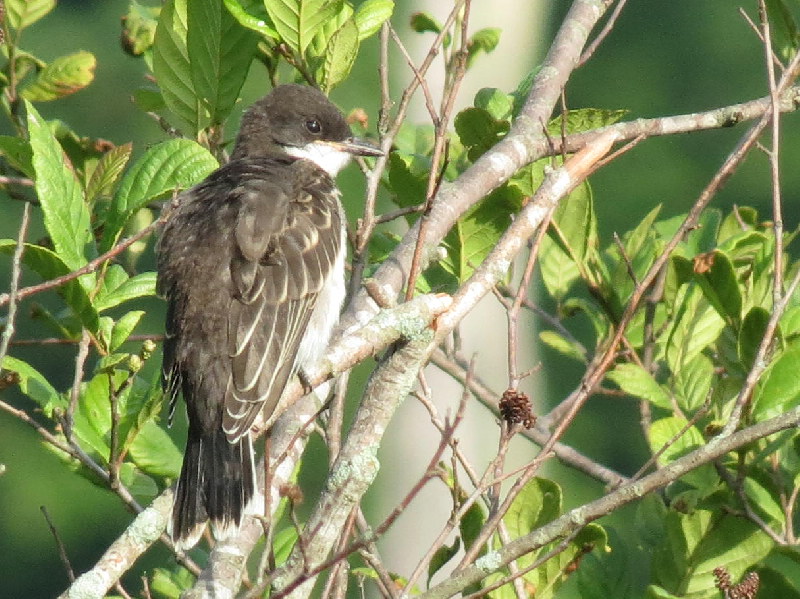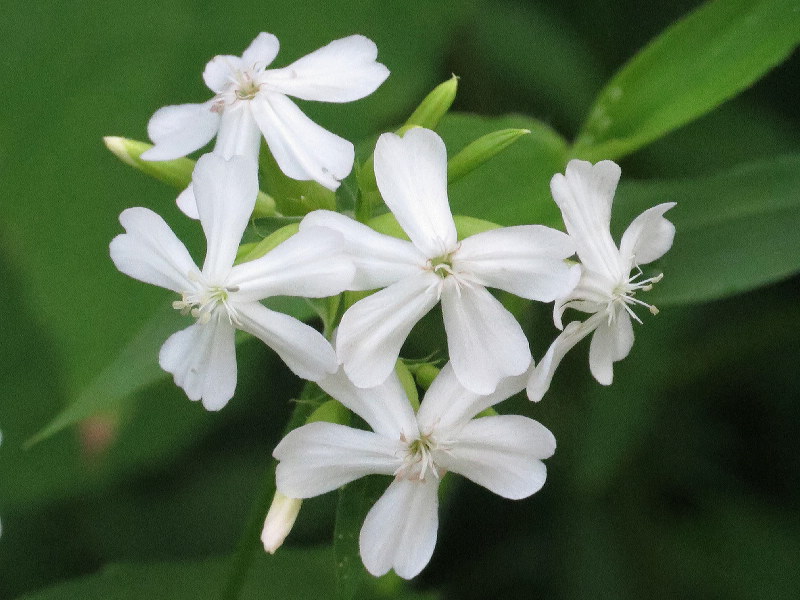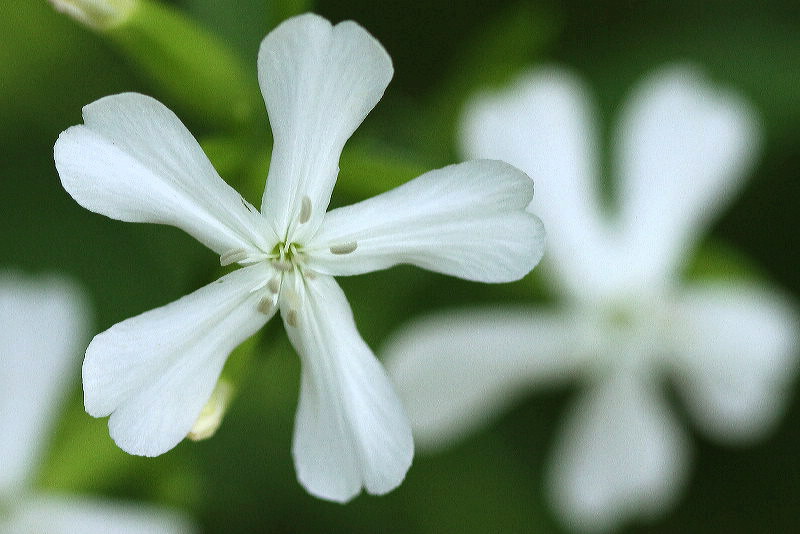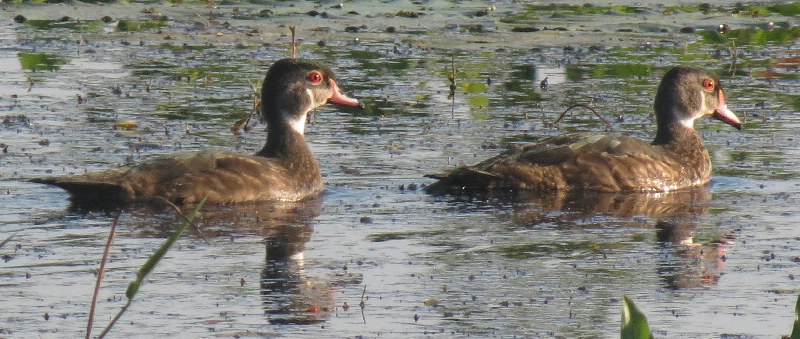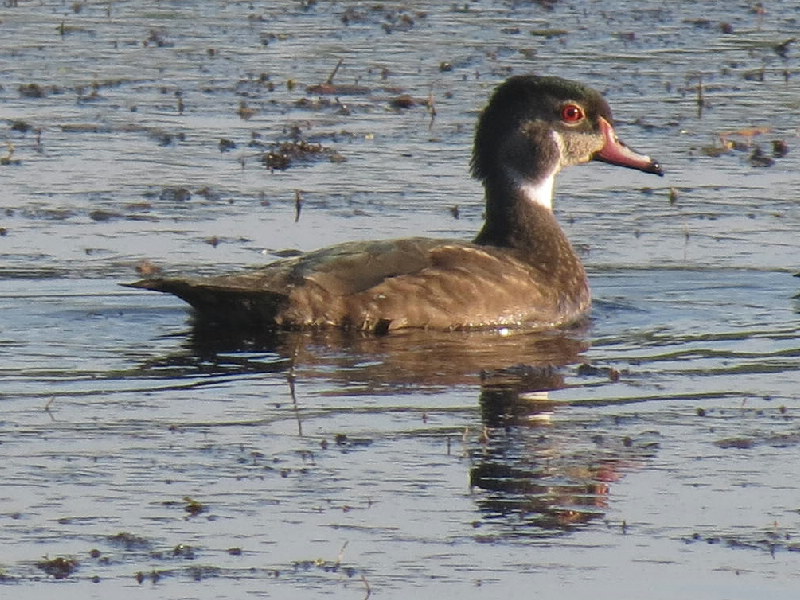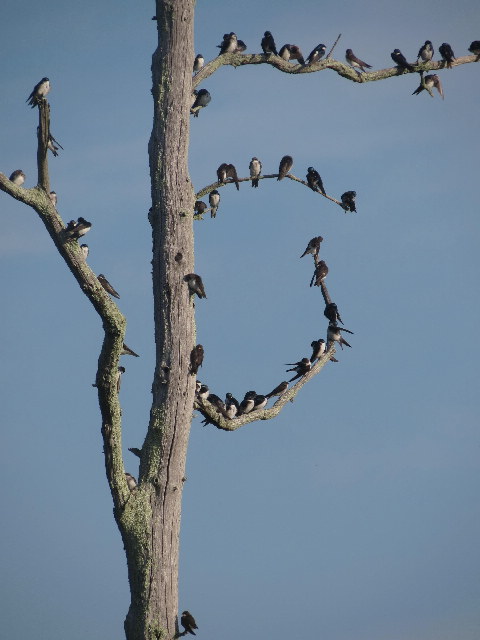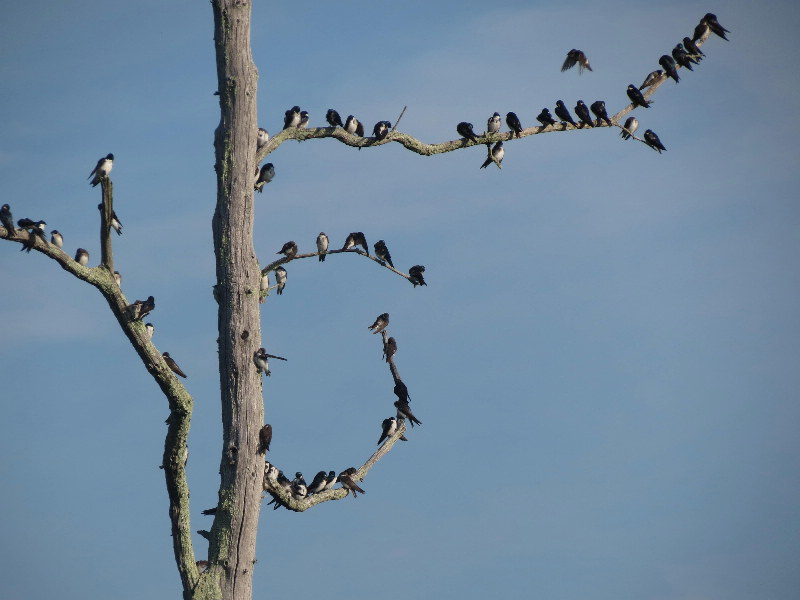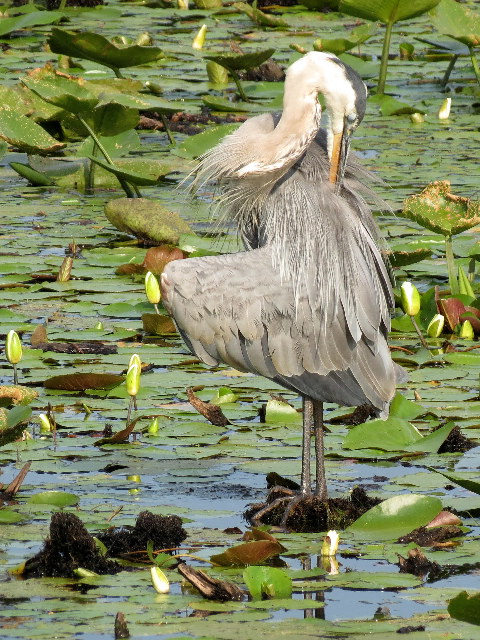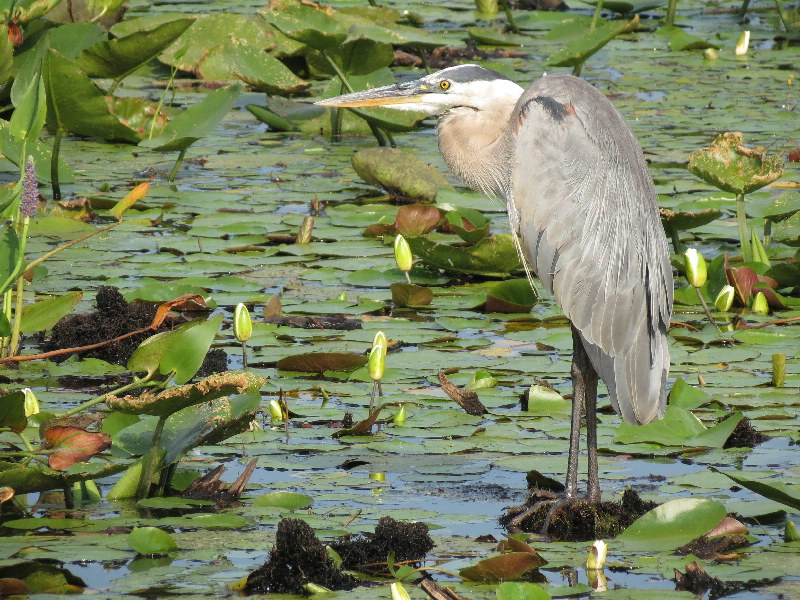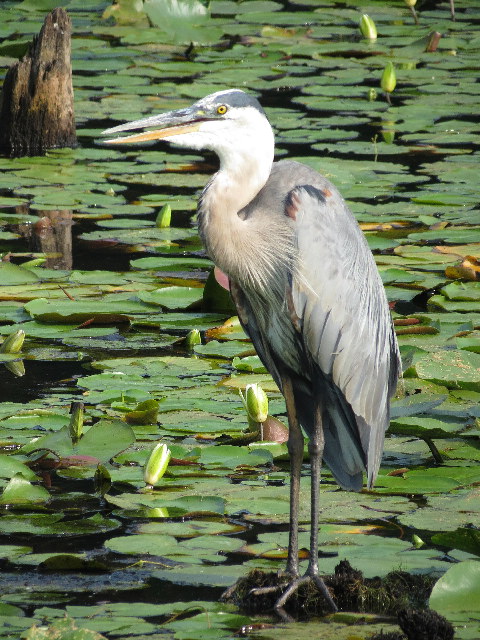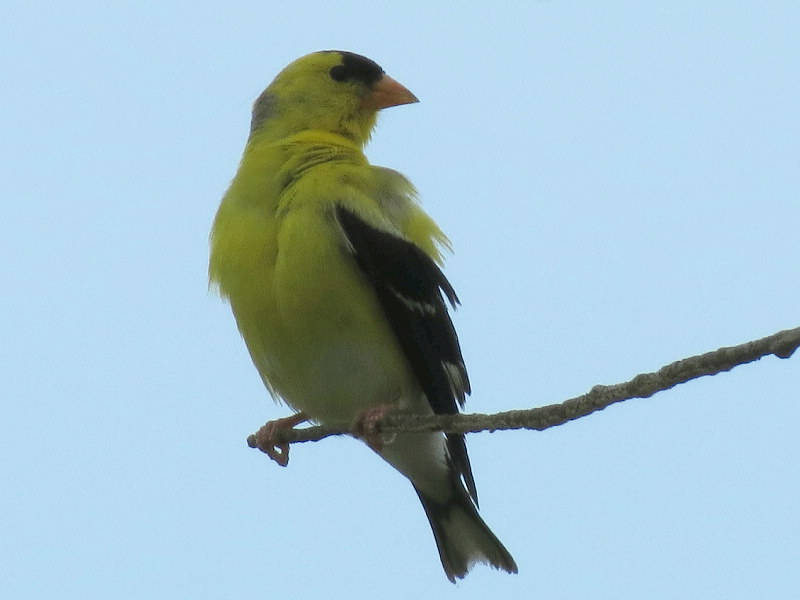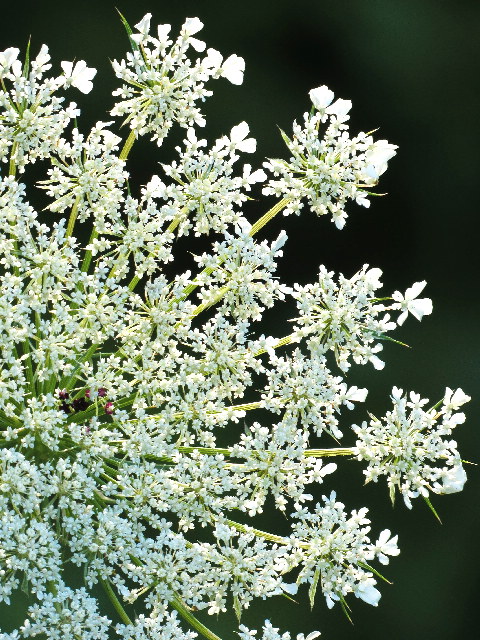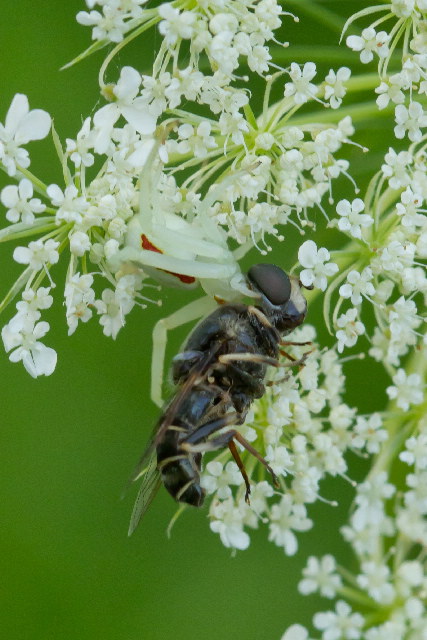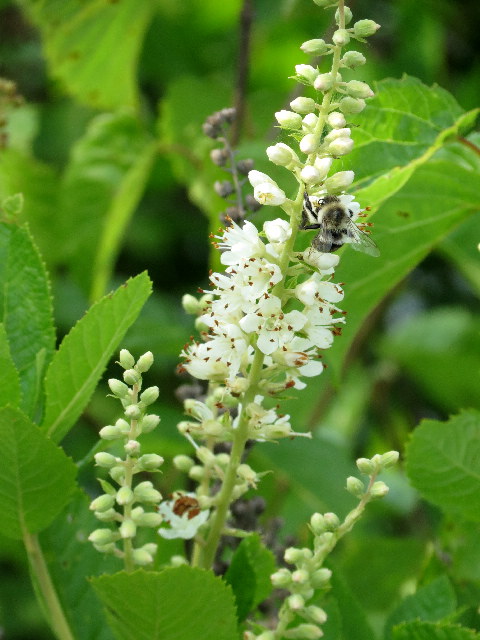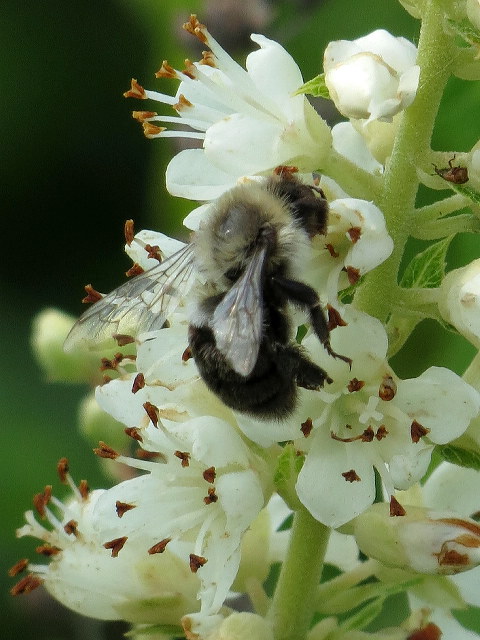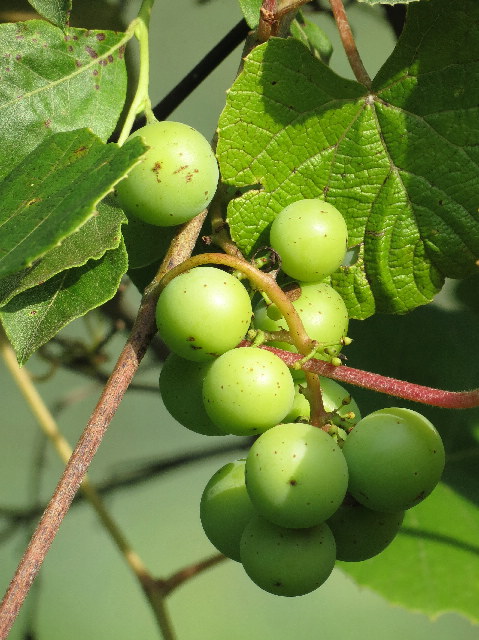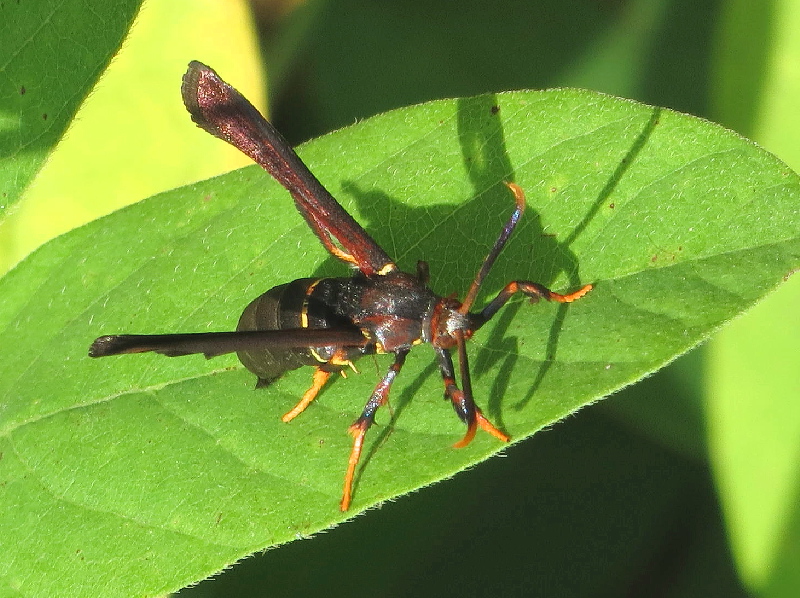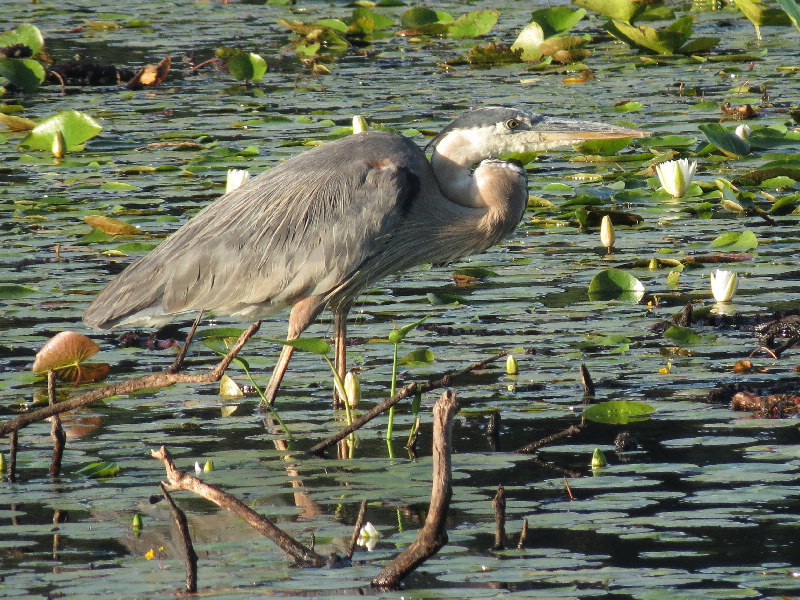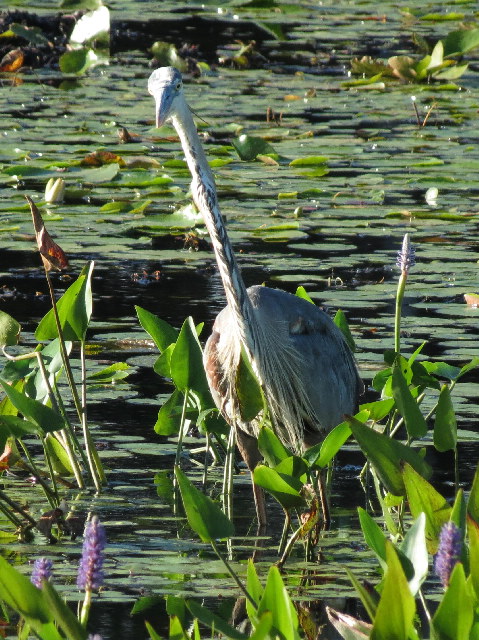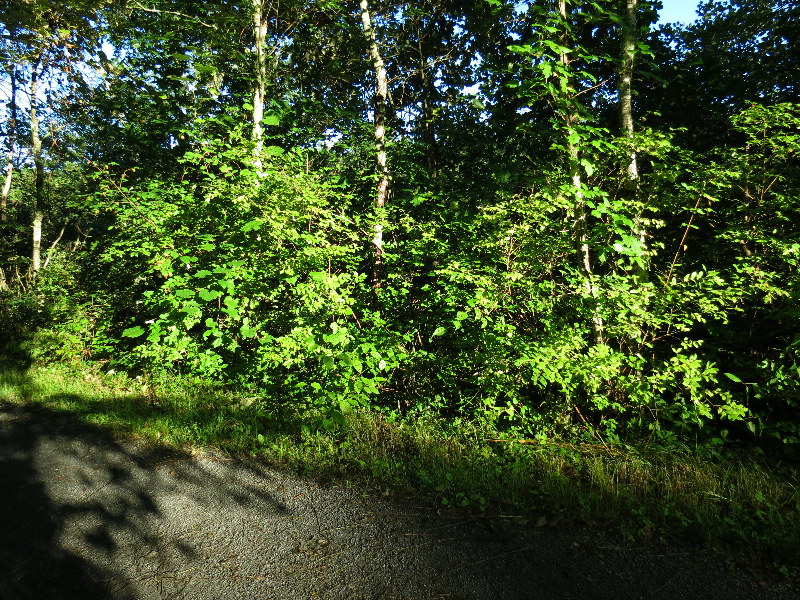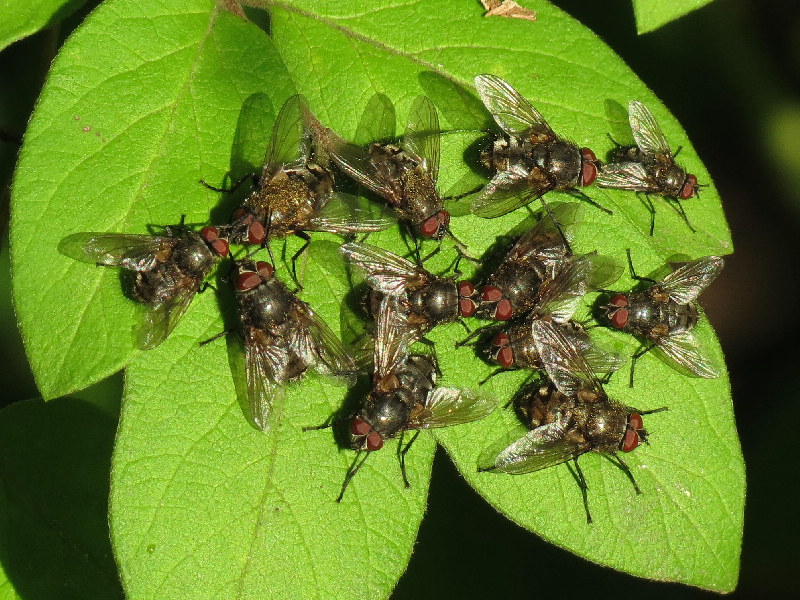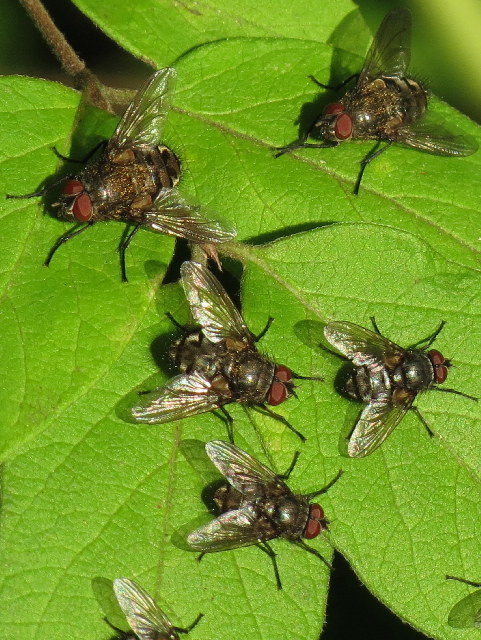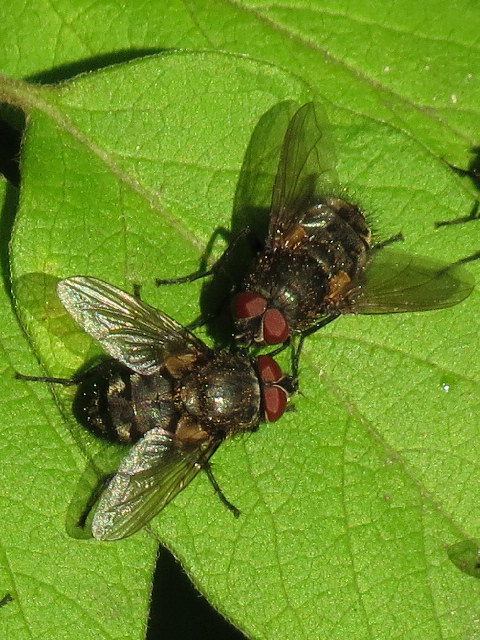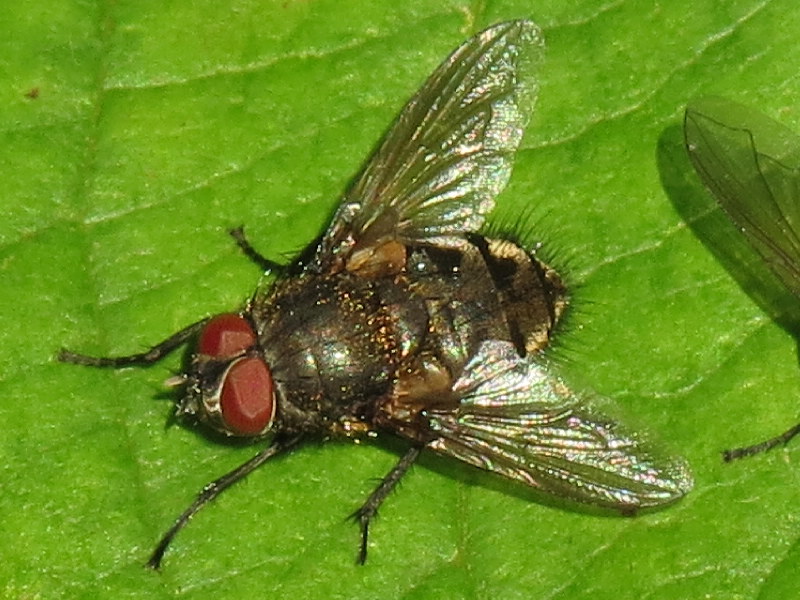Along the Air Line... 2012 - Summer, Part 3 The Air Line Trail in Eastern Connecticut - Stan Malcolm Photos |
mHome Page Stan's FlickR Albums |
July 13th. An afternoon walk to the power lines east of Route 207 and west of Leonard Bridge Road in Lebanon. You can just see the Air Line Trail in the background at the right. In the sandy soil of the power line right of way, I noticed... |
...a large number of roughly 1/4" round holes with fresh fine soil around them. |
Eventually, I started observing a number of wasps hovering and exploring the sand. |
|
Looking closely, I could see them digging. (Best to view full screen.) |
Elsewhere, I saw a wasp pushing soil out of the hole, using its head like a bulldozer. |
It paused in the entry way awhile. Assessing my looming figure? |
|
This photo allowed a positive ID. The shape of the clypeus makes this wasp a member of the family Crabronidae, subfamily Philanthinae - the Beewolves! This most likely is a female Philanthus gibbosus which digs underground nests and stocks them with bees as food for its larvae. |
Nasty mandibles. Idle speculation, but I imagine the textured frons (forehead) and certainly the flat head are adaptations to aid in pushing soil out of the burrow. |
Eventually, the wasp exited the burrow... |
|
|
...turned, and... |
...kicked sand away. |
|
Finally, it retreated down into the burrow. What a treat to see these energetic wasps in action. |
Nearby at the site of a beaver lodge pond, now dried up, I found invasive Purple Loosestrife (Lythrum salicaria). Just a couple of plants so far, but likely followed my more. |
Perhaps our prettiest invasive, but a threat to native vegetation. |
July 14th. Back at Raymond Brook Marsh, a large solitary American Crow (Corvus brachyrhyncos) atop a dead tree far across the marsh. |
Five more in a neighboring tree. |
The Tree Swallows (Tachycineta bicolor) continue to preen together in the morning. |
|
|
|
|
Fragrant Water-lilies (Nymphaea odorata) are at their peak. |
The Wood Duck (Aix sponsa) family group is still around, if somewhat shy. |
The young Eastern KIngbirds (Tyrannus tyrannus) still spend a lot of time on the old beaver lodge where they hatched. |
July 15th. Bouncing Bet (Saponaria officinalis). |
|
Two young male Wood Ducks (Aix sponsa). |
They're starting to show sex-specific colors on their head and beak, but haven't quite got their crests yet. |
The Tree Swallows have taken over a favorite dead tree. |
|
|
July 16th. A Great Blue Heron (Ardea herodius) grooming... |
|
|
...and showing a little gular flutter. (It was 90 degrees F.) |
|
A male Americn Goldfinch (Carduelis tristis). |
A young Eastern Cottontail (Sylvilagus floridanus). |
Queen Anne's Lace (Daucus carota) with the sun behind it. |
A well camouflaged Crab Spider has captured a Syrphid Fly. |
Sweet Pepperbush (Clethra alnifolia) is fragrant and... |
...attractive to bees. |
Concord Grapes (Vitas sp.) are full size but a long way from ripe. |
July 19th. An Oak Stump Borer Moth (Paranthrene asilipennis); a first sighting on the trail for this wasp mimic. |
July 21st. One of three Great Blue Herons (Ardea herodius) at the marsh this morning. |
|
Shortly after 7:00 AM, I heard a buzzing sound at the west end of Raymond Brook Marsh. It was coming from this sunlit patch of Morrow's Honeysuckle, plus grape and maple. |
The sound was made by hundreds of calypterate muscoid flies (see below for details), most perched on the honeysuckle. |
Listen! (Turn your volume up.) |
Interesting... the flies are all males (because their eyes meet at the top of the head; females have a broad gap between somewhat smaller eyes). |
Still all males. |
|
By 8:00 AM, the flies had nearly all dispersed. I've seen similar aggregations at the exact same location in previous years. Over the next several weeks, I saw similar aggregations at this spot on sunny mornings. With help from dipterists George "Jeff" Boettner at UMass, Amherst, and James O'Hara and Tarek Mohammed of the Canadian National Insect Collection ("CNC", Ottawa) the story of these flies can be told. Aggregations of male flies (and other creatures) like this are called "leks". Jeff Boettner says, "Often I see this behavior on tops of mountains and such, and they will often use the same exact spot year after year. But yours is an amazing number of flies! Leks are basically bachelor hang outs, where boys play king of the hill and the boy holding the important spot when the female arrives gets to mate. They can often last just a few hours a day, so you have to know their schedule. But if you go back to the same tree in a year at the same time of day you may see it again. This a a great strategy for rare flies, (if you are rare it can be hard to find a mate, but if they have a preprogrammed spot- often a high point, or near water, and a preprogrammed time of day, it can limit the wasted time looking for a mate." Subsequent to photographing these flies, I collected a sample and sent them to the CNC where Dr. Tarek Mohammed identified them and sent this kind reply: "Dear Dr. Malcolm, Your specimens have reached me safe. They are perfectly pinned and labelled. Such specimens are greatly appreciated by the Canadian National Collection of Insects. Thank you. The specimens are all males and belong to Pollenia labialis Robineau-Desvoidy, 1863. This species is distinguished from all other Pollenia species present in North America by the dark brown or black colour of the basicosta and posterior thoracic spiracle. Also, the facial carina is reduced or absent. Distribution: Northern United States and southeastern Canada. Pollenia labialis has been previously recorded from Ontario, Indiana, Michigan, Maine, New Hampshire, Oregon, and Washington. Therefore, these specimens are an important addition to the CNC. According to Rognes [1991: Blowflies (Diptera, Calliphoridae) of Fennoscandia and Denmark. Fauna Entomologica Scandinavica 24: 1-272], the biology of Pollenia labialis is unknown." So, the Air Line Trail collection extends the known range of P. labialis into southern New England. A pity that more isn't know of this species' biology, but some other species of Pollenia are known to parasitize earthworms. |

